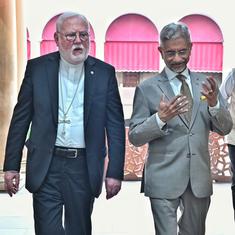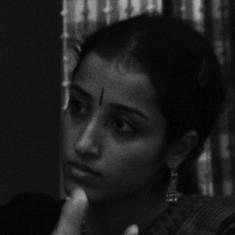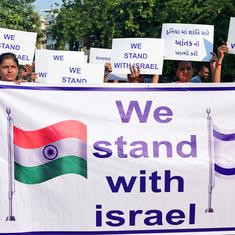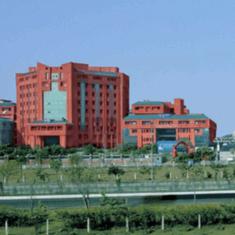On Thursday, several news outlets reported on a study released by the prime minister’s Economic Advisory Council on the changes in the share of population of religious minorities in 167 countries between 1950 and 2015.
The headline for most publications was that the share of Muslim population in India had risen from from 9.84% in 1950 to 14.09% in 2015 – which is so say, 43.15%. On the other hand, the share of India’s Hindu population declined from 84.68% to 78.06% during that period – that is, 7.82%, the study said.
Union minister Rajeev Chandrasekhar claimed that the “demography of India is being altered” due to increase in population of a “particular community”. He also linked the study to the Bharatiya Janata Party's claim that the Congress wanted to introduce reservations in education and government jobs on the basis of religion.
The first claim made by Chandrasekhar is misleading while the second one is outright false. The findings of the study about the change in religion-wise population share are not new and follow a trend that has been well-documented in the decadal Census.
Census data shows that the religious composition of the country’s population has undergone only modest changes since 1951. In fact, the decadal growth rate for Muslims has been declining over the past three decades.
As far back as 2015, Shoaib Daniyal had written about the flaws in the arguments of the leaders of the Hindutva party. In an article headlined, “Five charts that puncture the bogey of Muslim population growth”, he demonstrated how the rhetoric on demographics is belied by data. Read it here.
The second claim that the Congress intends to provide quotas on the basis of religion has been debunked by several organisations, including Scroll. The Congress manifesto makes no such promise.
BJP MP Sudhanshu Trivedi made similar claims, while the party’s social media cell chief Amit Malviya claimed that the rise in share of population of Muslims was due to “decades of Congress rule”.
The fact that BJP leaders are using a well-known fact about India’s demographics to make misleading claims in the middle of the general elections raises questions on the timing of the release of the study. Rashtriya Janata Dal leader Tejashwi Yadav asked how the study could have determined the country’s population according to religion when the national Census, scheduled to be conducted in 2021, had not yet been started.
India’s religious composition largely unchanged
The introduction to the study, co-authored by Shamika Ravi, a member of the Economic Advisory Council to the prime minister, and two others, says that it was conducted to analyse shifting demographic trends “aggravating economic disparity within and between countries, straining governance and fuelling friction between states and people”.
The study uses data from a 2017 research paper on religious demographics of several countries authored by Davis Brown, a researcher at the Baylor University in United States’ Texas, and Patrick James, a professor of international relations at the University of Southern California.
In a section on the change in religious demographics in South Asian Association for Regional Cooperation countries, the study by the prime minister’s advisory council notes the increase in Muslim population and the decline in Hindu population in India.

The findings do not reveal anything new. Neither do they signal that India’s demography is changing significantly, as Chandrasekhar suggested.
Census data shows that in 1951, Muslims accounted for 9.8% of India’s population, while in 2011 the share was 14.2%. In the corresponding period, the share of Hindus fell from 84.1% to 79.8%.
According to the study, by 2015, the Hindu population share dropped further to 78.06%.
But this is not on account of a corresponding rise in Muslim population. As the study notes, the Muslim population share in 2015 was 14.09% – lower than what the 2011 census recorded.
Moreover, the study by the prime minister’s advisory council noted that “globally the share of the majority religious denomination has gone down by approximately 22 percent”. So, the decline of 7.82% in India’s Hindu population, according to the study, is significantly lower than the global average.
Immigration and conversion bogey
On Thursday, Chandrasekhar also raised questions about the reasons for the rise in share of the population of Muslims in India. “How much of this growth is caused by illegal immigration and conversion?” he asked.
The study itself provides no definite answer to the minister's question, even as it notes factors like "migration, conversion, differences in fertility rates and variation in territorial boundaries" as reasons for change in the religious compositions of a population.
However, it adds: “We abstract away from the causes of this change and instead focus on the share of the minority population as a cumulative outcome measure of their well-being.”
A study released in 2021 by the Pew Research Center study had concluded fertility rates to be the primary driver of population change in India. The fertility rate among Muslims still remains the highest in India. But the National Family Health Survey-5 released in 2022 found that the fertility rate among Muslims has seen the sharpest decline among all religious communities over the past two decades.
The Population Foundation of India on Thursday noted that “the decadal growth rate for Muslims had decreased from 32.9% in 1981-1991 to 24.6% in 2001-2011. This decline is more pronounced than that of Hindus, whose growth rate fell from 22.7% to 16.8% over the same period.”
As for religious conversion, the Pew Research Center study found that 98% of Indian adults identified with the religion in which they were raised, which shows the lack of impact of conversions on the religious composition.
Meanwhile, more than 99% of people who live in India were also born in India, the study found. This data showed that migration too has hardly had any impact.
False claim about religion-based quota
Chandrasekhar and Trivedi used the study’s findings to repeat the false claim that the Congress would introduce reservations on the basis of religion if it came to power. The claim has been repeatedly made by BJP leaders, including Prime Minister Narendra Modi, at several election rallies.
“How much of this growth [in Muslim population] is caused by illegal immigration and conversion?” Chandrasekhar asked on Thursday. “What is the impact of this increase on the rights of other minority communities? There is a huge attempt by some parties, Congress to alter the Constitution and bring religion-based reservation."
The claim is baseless as the Congress’ manifesto neither talks about religion-based reservations, nor has any of its leaders made such announcements.










